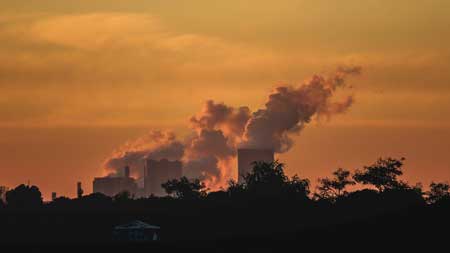Most people believe that the Earth is beginning to heal after almost two years of decreased travel due to the ongoing health crisis. However, air pollution continues to be a problem, with reports indicating that levels are spiking all over the world.

In the American Lung Association’s State of the Air 2022 report, it was revealed that the number of Americans who were exposed to deadly particulate air pollution was almost 9 million higher than in the previous year. Meanwhile, major cities in Europe, such as Tyne, Seville, and Malaga, are reported to have unhealthy levels of nitrogen dioxide and particulate matter in the air.
It’s a well-known fact that poor air quality can have adverse health effects on humans, but studies have shown that butterflies can also be negatively affected by pollution. Not only can it be detrimental to their health, but bad air quality can make them feel “confused” and derail their ability to be good pollinators, even if they’re in the presence of flowers that are attractive to them. Here’s how air pollution can cause confusion in butterflies, and what you can do to help.
The Damaging Effects of Pollution on Butterflies
There are many factors that contribute to air pollution such as industrial emissions, burning of fossil fuels, and waste in landfills. But among the biggest contributors is transportation. Now that traveling, face-to-face classes, and in-person work have been given the green light, more people are out there, traveling and commuting to make up for the two years of lockdown.

While it’s necessary to make the transition to our former way of life, it’s also important to find ways to improve outdoor air quality. Individuals can take concrete steps to decrease their carbon footprint, while companies, such as those belonging to the airline industry, should make an effort to make air travel more sustainable, such as having electricity-powered aircrafts and reducing short-haul flights. Failure to decrease pollution levels can be incredibly damaging to our health, wildlife, and ultimately, our food supply.
Research Confirms Pollution Effects on Butterflies
Research led by the University of Reading in the UK confirms that air pollution can impair butterflies and other pollinators, which has resulted in reduced pollination rates by more than 30%. According to the study, the presence of nitrogen oxides and ozone in the air masks the scent of flowers, making them less recognizable to pollinators who are supposed to find them. Since nearly 10% of the world’s food production depends on the efforts of pollinators, a sharp decline in pollination rates can cause economic damage and possible food shortages across the planet.
Helping Butterflies Thrive
Small efforts to improve air quality can help butterflies do their job and prevent a massive food shortage in the future. For instance, gardeners and farmers should avoid using nitrogen-based fertilizers since these can emit nitrous oxide, which can cause confusion in butterflies.
Cutting down on pesticides can also help to conserve pollinators since these substances can be deadly to butterflies, bees, and moths. Also, switching to sustainable energy, walking, biking, or carpooling allows you to lower your carbon footprint and reduce emissions which can help to reduce pollution levels in your area.
Signs of a Healthy Environment
The presence of pollinators indicates a healthy environment, and they play an important role in the survival of the human species. Do your part to reduce pollution levels in your area to help butterflies become effective pollinators, and ensure a safe and healthy future for everyone.




